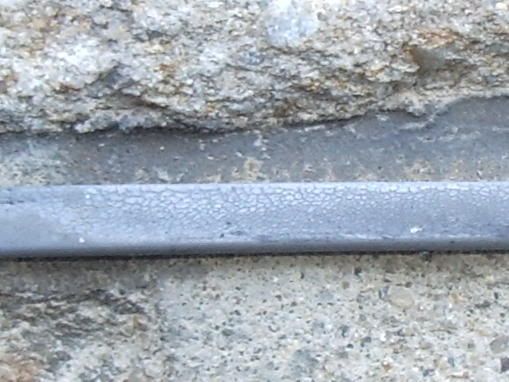Interesting pictures
624Y Twin & Earth PVC Cable BS6004 A05VVH4-U
Standard: BS6004 Electric cables. PVC insulated, nonarmoured cables for voltages up to and including 450/750V, for electric power, lighting and internal wiring.
624B Twin & Earth LSZH Cable 300/500V BS7211
Standard: BS7211 Electric cables. Thermosetting insulated, unarmoured cables for voltages up to & including 450/750V, for electric power, lighting & internal wiring, and having low emission of smoke and corrosive gases when affected by fire.
Both types it says "and internal wiring" not "with internal wiring" so although I would agree that not really suitable it would be hard to show it was incorrectly selected when one reads the manufactures web site.
If we look at NYY Cable 600/1000V to VDE0271/0276
Applications: Energy cables for use in open air, underground, indoors and in cable ducts
By comparing it becomes apparent that twin and earth is not designed for use in open air or it would say so.
510.2 Every item of equipment shall be selected and erected so as to allow compliance with the regulations stated in this chapter and the relevant regulations in other parts of BS 7671 and shall take account of manufacturers' instructions.
Clearly when looking at the data when they say "and internal wiring" it means should only be used internal which raises the question what should be done about it when found external? Could one return to an electrician 10 years after doing the work and say "I want this cable replaced FOC as it should not have been used here"? I say 10 years as that is when the first "Electrical Installation Condition Report" (EICR) would be carried out.
After 10 years then I would consider one had left it too late to come back to original electrician and one should be going to guy who did EICR.
With the "house rewired by the East Midlands Electricity Board" then likely the firm still exists but many people do some time as self employed then latter move to cards in and as a result stop paying insurance and so to claim for faulty workmanship years down the line would be a problem.
Although we all offer some form of guarantee to return 10 years after the event would cause all sorts of problems including was it even done by the firm in first place. Today we all fill in the installation or minor works certificate which details our work but 10 years ago that was not the case with many electrical firms.
With the installation or minor works certificate tomorrow we may find people will be claiming for work done incorrectly using the installation or minor works certificate to show it was "Joe Blogs" who did the work and signed it off.
My son has moved home many times since he was self employed including a time in a narrow boat and with such limited storage I would not expect he has a single bit of paperwork from back in the days when self employed. I am sure if some one tried to get him to correct faulty work now they would get very little out of him.
So where twin and earth has been used outside what should the normal man in the street do about it?




